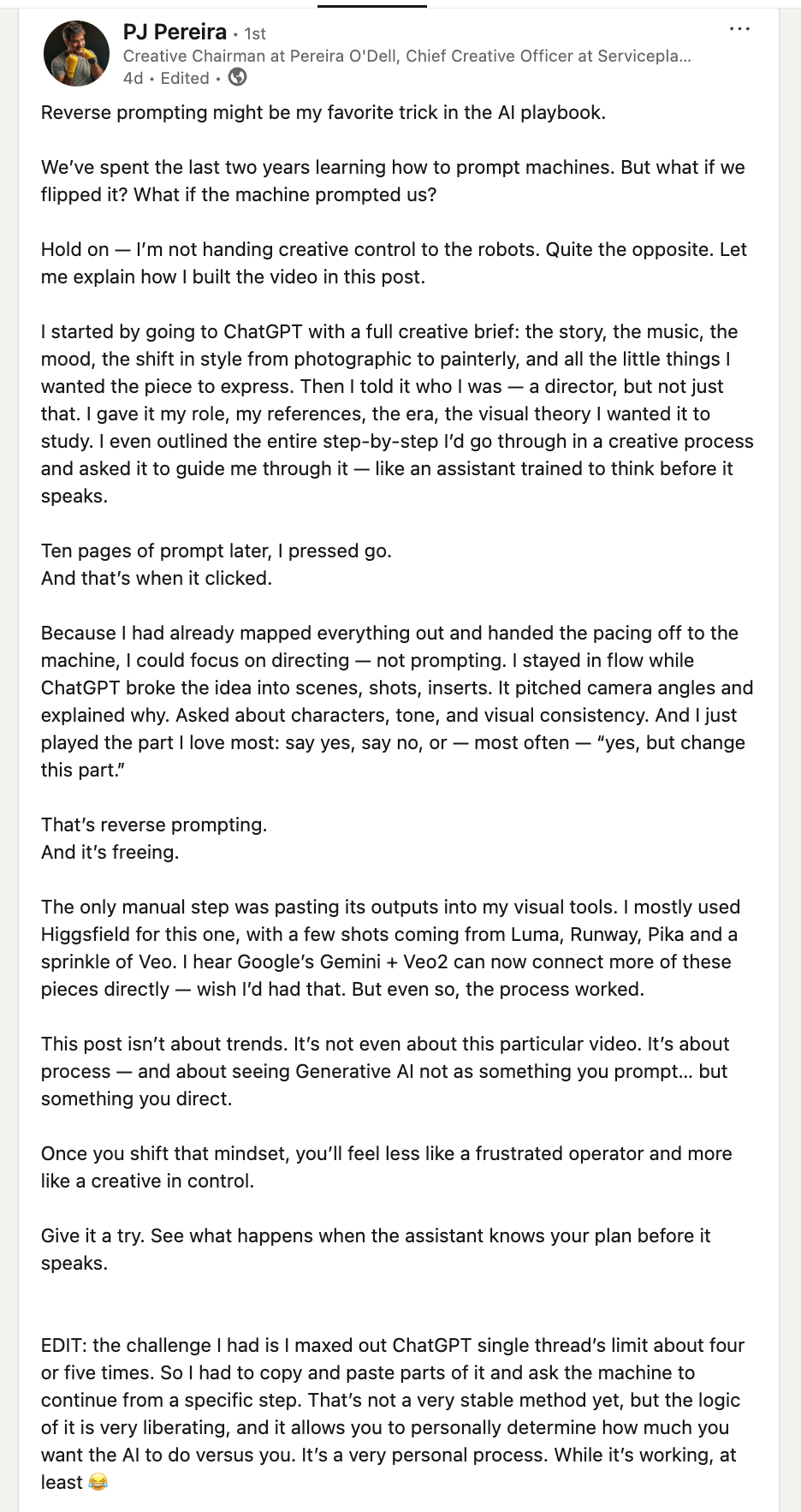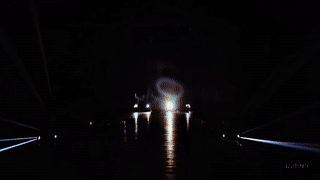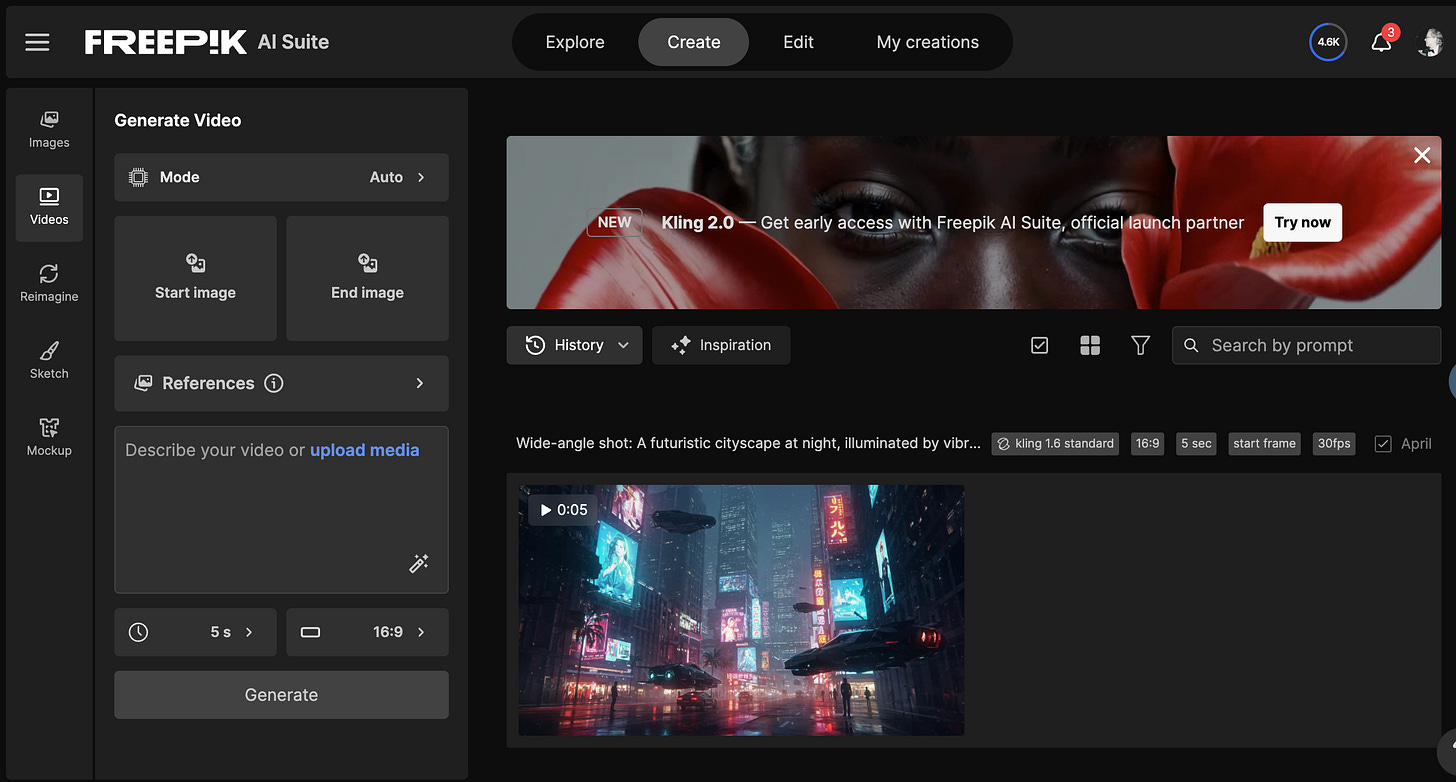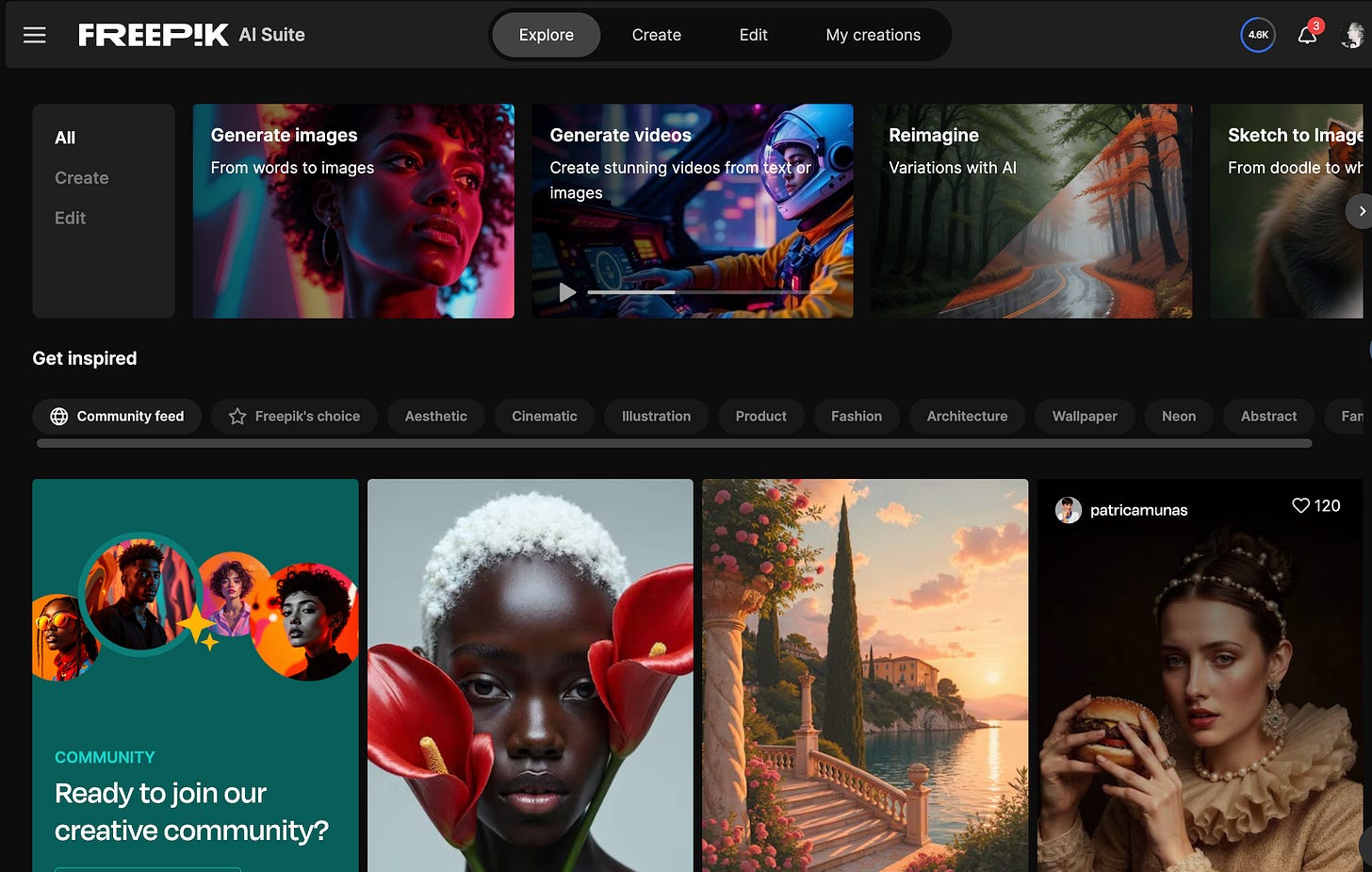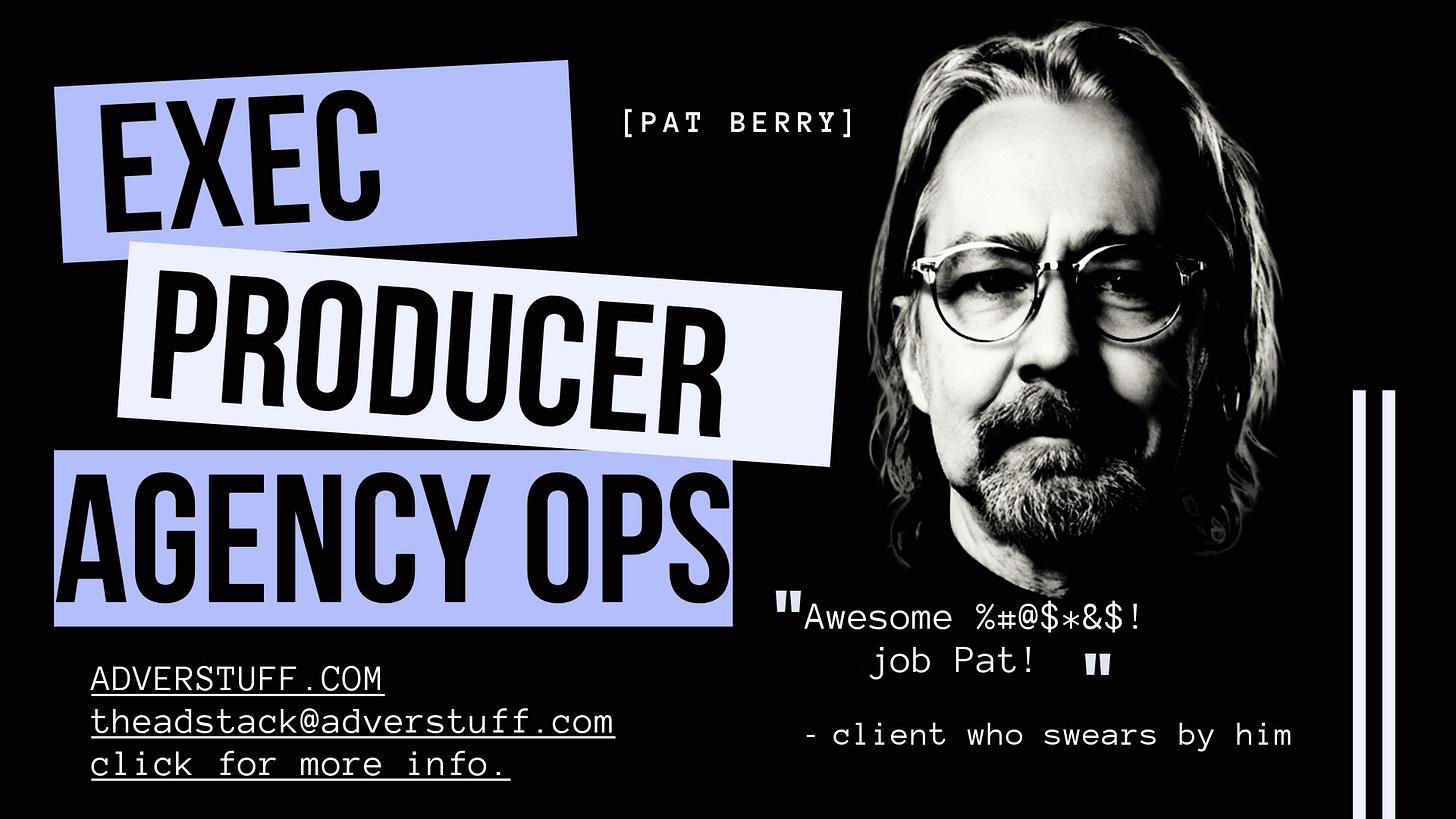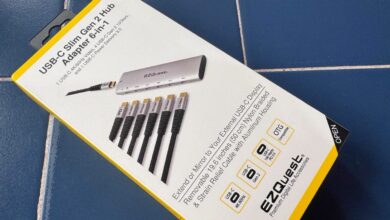63. Freepik (not free), Veo 2 (set free), and Collaborative AI (prompt free)

Hey gang. I am operating under the assumption that, since I first started this venture, people are experimenting more playing with the tools and things they consider the AI fun stuff. I would guess that this would hold true across all professions from project managers up to CEOs. And if I’m wrong, you guys should be doing it anyway.
What I’m finding is, as AI persists in permeating the Advertising space (and our lives in general), it’s becoming invisible. I wrote about this a few months back. It ingrains itself into the tools, technology, furniture, clothing, what have you – that we’re already using. I liken it to Compuserve or AOL, or just plain browser-based connections evolving into the Internet of Things (IoT). And now the fridge has Internet service.
What this means is fewer earth shattering headlines. Less drama. But no less work to do. So I will continue to gather things that catch my eye that others might find compelling useful, helpful or just plain interesting. I’ll leave it at that. -pb
The Verge – Google Veo 2, the company’s advanced AI-powered video generation model, is arguably the best generative video generator out there. It became publicly available on TAX DAY! April 15, 2025. This rollout marked its integration into several platforms, including:
-
Google’s Veo 2 AI video generator is now publicly available, offering advanced tools for creating realistic video content, but with limitations like high costs and short clip durations.
-
Access is provided through platforms like Freepik (shorter, affordable clips) and Fal AI (longer, pricier clips), catering to different user needs.
-
Veo 2 excels in producing lifelike visuals and smooth animations but struggles with complex or artistic prompts, making it ideal for realism-focused projects.
Subscribers can generate eight-second, 720p videos directly from text prompts using Veo 2. The Verge
Prior to this public release, Veo 2 was available in a limited capacity through platforms like Vertex AI and VideoFX, starting in December 2024. Freepik has been a popular source for those not among “The Chosen.” Wikipedia
For those interested in exploring Veo 2’s capabilities, you can access it through the Gemini Advanced platform or experiment with it in Google AI Studio. And again, Freepik.
PJ Pereira, who stops by here from time-to-time, did an AI mic drop in my LinkedIn feed April 17th. What he has named “Reverse Prompting” is quite the compelling creative (reverse) approach to content creation. I’d rather you hear it in his own words.
Here’s what I think it looks like in more general terms. I process bullet points best because my Dad was an engineer. It’s genetic. And the ADHD doesn’t help.
I used the “Out of the Box” option with “Prompt Buddy” from last week’s edition to visually present “Reverse Prompting.” You get holograms.
-
The user provides ChatGPT with a detailed creative brief, outlining the story, style, music, mood, references, and the creative process step-by-step.
-
They instruct ChatGPT to guide them through the creative process, effectively acting as an assistant.
-
ChatGPT breaks the project into scenes, shots, and inserts, suggesting camera angles, visual consistency, and pacing.
-
The user focuses on creative decisions, approving or refining ideas, while ChatGPT handles the technical breakdown.
-
The user uses generative tools (Higgsfield, Luma, Runway, Pika, Veo) to create the visuals based on ChatGPT’s output.
-
Manual integration is required to combine the visuals from multiple platforms, as there was no direct connection between the tools.
-
When ChatGPT reaches its thread limit, the user copies and pastes parts of the conversation to continue the process, managing the limitations creatively.
-
The user transitions from prompting AI to directing AI, empowering them to make high-level creative decisions while the AI handled the logistics and breakdowns.
-
This approach allows the user to focus on creativity, feeling less like an operator and more like a director.
This process emphasizes collaborative AI where the user is in control, delegating tasks to the AI, which provides structured ideas and options based on the user’s vision. So all of you GPT’ers can get to work on a GPT that does all of the above. And PJ gets a free one.
You can click the above article to read the original LinkedIn post and video. I’ve also taken the liberty of posting PJ’s video below as well. Nicely done.
Source: PJ Pereira / LinkedIn
Stock photos. You’ve got a guy smiling at a salad. A woman laughs at a computer. Who are these people? Why are they so happy?
And then along comes Freepik.com, attempting to turn the whole stock media game into a comedy of creative abundance. Founded back in 2010 in beautiful Málaga, Spain, Freepik is the offspring (I hate “brainchild”) of Alejandro Sánchez, Pablo Blanes, and Joaquín Cuenca. They had one big idea: make design resources available to everyone. Boom. Revolution.
At first, it was just a search engine—a little online librarian for free graphics. But now? It’s a full-blown design supermarket. You want vectors? They got ‘em. Photos? More than you can scroll through in a lifetime. Templates? Enough to make your PowerPoint actually look like you care.
Now let’s talk about this thing they call freemium. It’s been around for a while. That’s when you give people stuff for free, but not all of it. Kind of like offering a sample at a bakery, then asking $4.95 for the whole cookie. With Freepik, you get access to tons of high-quality content absolutely free—as long as you’re cool with giving credit. That’s right: attribution! It’s like saying, “I didn’t make this masterpiece, but I know the guy who did.”
But if you want the good stuff—no attribution, unlimited downloads, special content—it’s Premium time. You pay a little, and suddenly it’s like being upgraded to first class. Legroom, complimentary peanuts, and all the stock images your heart desires.
And then—because we’re living in the future—they added AI tools. Image generators, video creators, background removers, you name it. The had Goggle’s Veo before Google. You’ve got all the latest fun toys – all on one invoice (the best part). You need a background gone? Poof. Want to upscale an image? Zip.
And Freepik’s been shopping too. They picked up Videvo for videos and sounds, Iconfinder for icons (obviously), and EyeEm for high-end photography. It’s like the Avengers of design platforms—everyone’s got their specialty, and together, they’re bad actors with tons of special effects. That doesn’t include Ironman BTW.
What makes it all work is that Freepik actually gives a damn about creators. They pay them. They support them. It’s not just a “thanks and good luck” situation. This is a real partnership. A community! It’s like open mic night, but everyone actually claps.
The numbers don’t lie: over 64 million users and more than half a million paying subscribers. That’s not some little garage startup anymore. That’s a movement. A global, pixel-powered, AI-assisted design uprising. And in an internet full of overpriced, watermarked nonsense, Freepik is like a refreshing glass of cold, unbranded lemonade.
And honestly—free icons, smart tools, human artists, AI magic? What’s not to love?
So if you’re new to the game of generative AI, this is a great place to cut your teeth. And it’s makes tracking the latest/greatest versions of AI power tools easier by putting it all under one roof.
One last item – I’m a freelance producer.
Please help share this far and wide:
https://substackcdn.com/image/fetch/w_1200,h_600,c_fill,f_jpg,q_auto:good,fl_progressive:steep,g_auto/https%3A%2F%2Fsubstack-post-media.s3.amazonaws.com%2Fpublic%2Fimages%2Fd1757589-19d2-41f8-ad2b-a42f5324440d_1440x960.webp
2025-04-23 04:01:22


